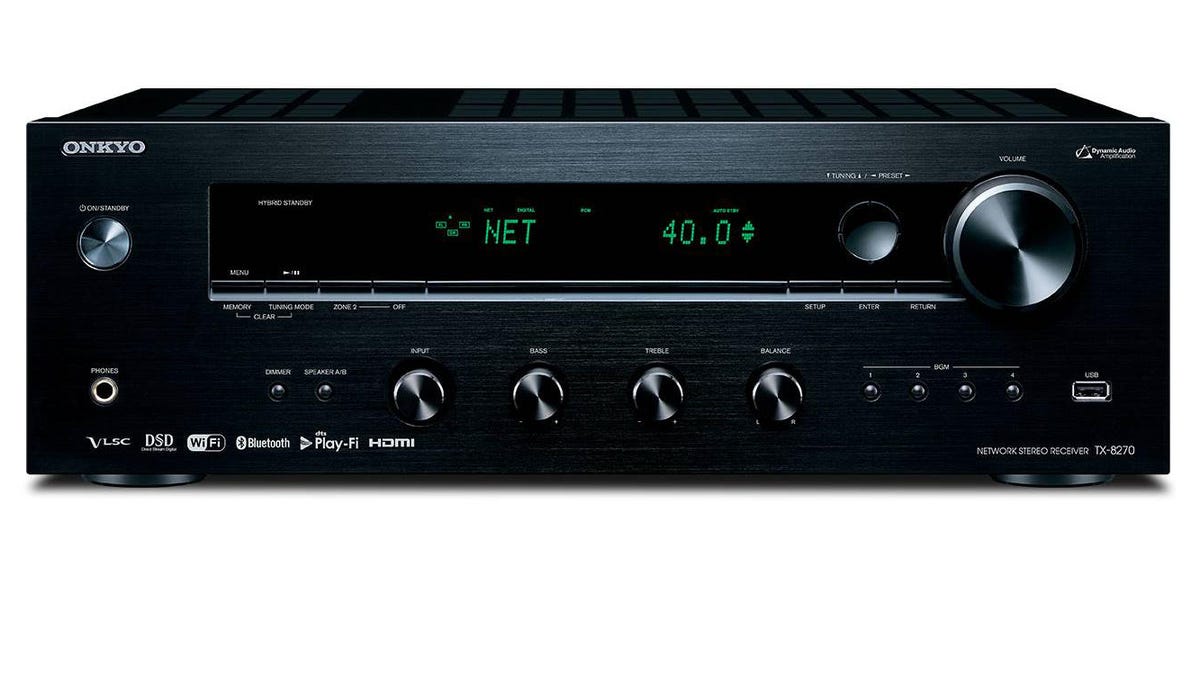Onkyo’s new stereo receiver offers unique HDMI switching
The Onkyo TX-8270 is the most feature-packed stereo receiver the Audiophiliac has ever tested!

I've long been an advocate of stereo home theater, but there was one stumbling block: stereo receivers and integrated amplifiers lacked video switching of any kind. For years I've asked manufacturers about that and all I got was a lot of blank stares. So, I'm especially happy to report Onkyo's TX-8270 stereo receiver sports four HDMI inputs and a boatload of other features that you normally get with multichannel AV receivers. The TX-8270's street price is $499, £539, AU$1,199.
The Onkyo TX-8270 stereo AV receiver.
This fully loaded 100 watt per channel receiver can happily drive 4-, 6- or 8-ohm speakers. It has ultra hi-resolution 384 kHz/32-bit digital converters, a moving-magnet phono input, Bluetooth , Chromecast , DTS Play-Fi, Spotify and AirPlay. The receiver boasts HDCP 2.2-compliant HDMI inputs that support pass-through of 4K/60 Hz video, 4K HDR in HDR10 or Dolby Vision formats, as well as the BT.2020 4K video standard. Stereo home theater has finally come of age!
The TX-8270 is the first stereo receiver or integrated amp I've tested that not only has a subwoofer output jack, but also has bass management with selectable crossover settings -- from 40- to 200-Hertz -- to optimize your subwoofer-to-speakers blend.
I paired the TX-8270 with a few speakers starting with the KEF LS50 and two Magnepan models: the new MMGi (review to come) and the .7 flat-panel speakers. With the LS50s the sound was clear and clean, just a little too lean for my taste, and a quick comparison with the $799 Outlaw Audio RR2160 stereo receiver I found the sound was more fully developed and rich. Returning to the TX-8270, the sound was harder and two-dimensional with Yo La Tengo's "Summer Fun" album.
I had similar results with the MMGi and .7 flat-panel speakers, and preferred the sound with the RR2160. I decided to hook up a subwoofer, my old PSB Alpha SubZero i to the TX-8270, and thanks to its flexible bass management system it was easy to fine-tune not only the sub's volume level, but also the crossover.
With the sub in play the TX-8270's sound was more muscular and potent with Jay-Z's new "4:44" album. The music's pulse was visceral and more dynamically alive. Alternatively, I warmed up the sound without the sub by using the TX-8270's tone controls and boosting the bass. The TX-8270 sounds fine, but it's just not up to audiophile standards. Adding the Alpha SubZero i put the sound over the top, but that sub is long out of production. No worries, I know for a fact the Hsu Research VTF-1 MK3 subwoofer is an even better match with the MMGi speakers.
If you're going to watch more movies and TV than listen to music, forget the MMGi, and opt for a pair of KEF Q350 speakers and the HSU VTF-1 MK3 subwoofer. Then again, any decent pair of speakers and sub would likely click with the TX-8270 for home theater duty.
In the end I still preferred the sound of the Outlaw Audio RR2160 (my full review will appear very soon on this blog), which also has bass management, but it's missing features like HDMI switching, Bluetooth, Chromecast, and it's $300 less expensive than the RR2160! They're both good receivers, but you have to decide what you want: sound quality or more features.

